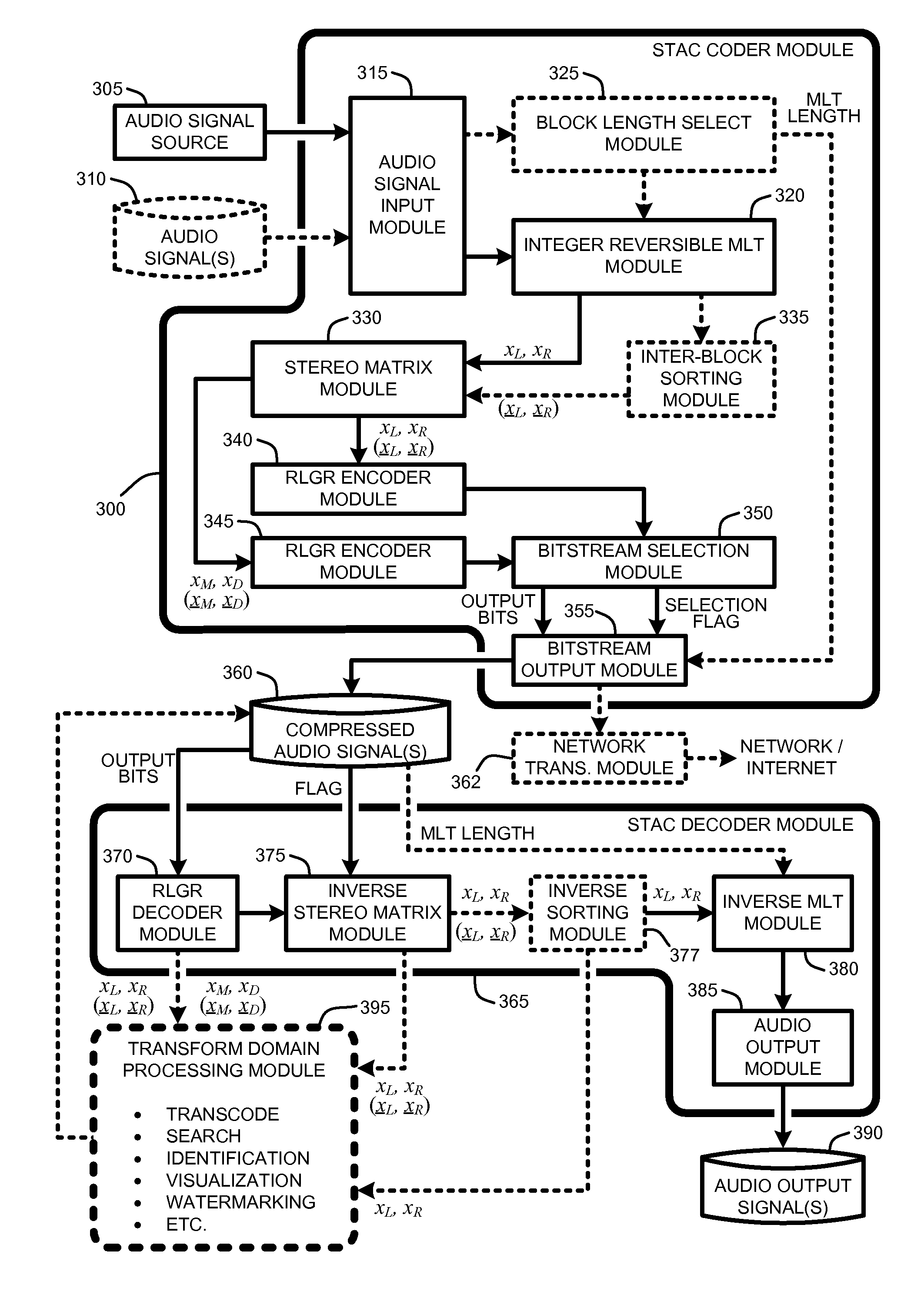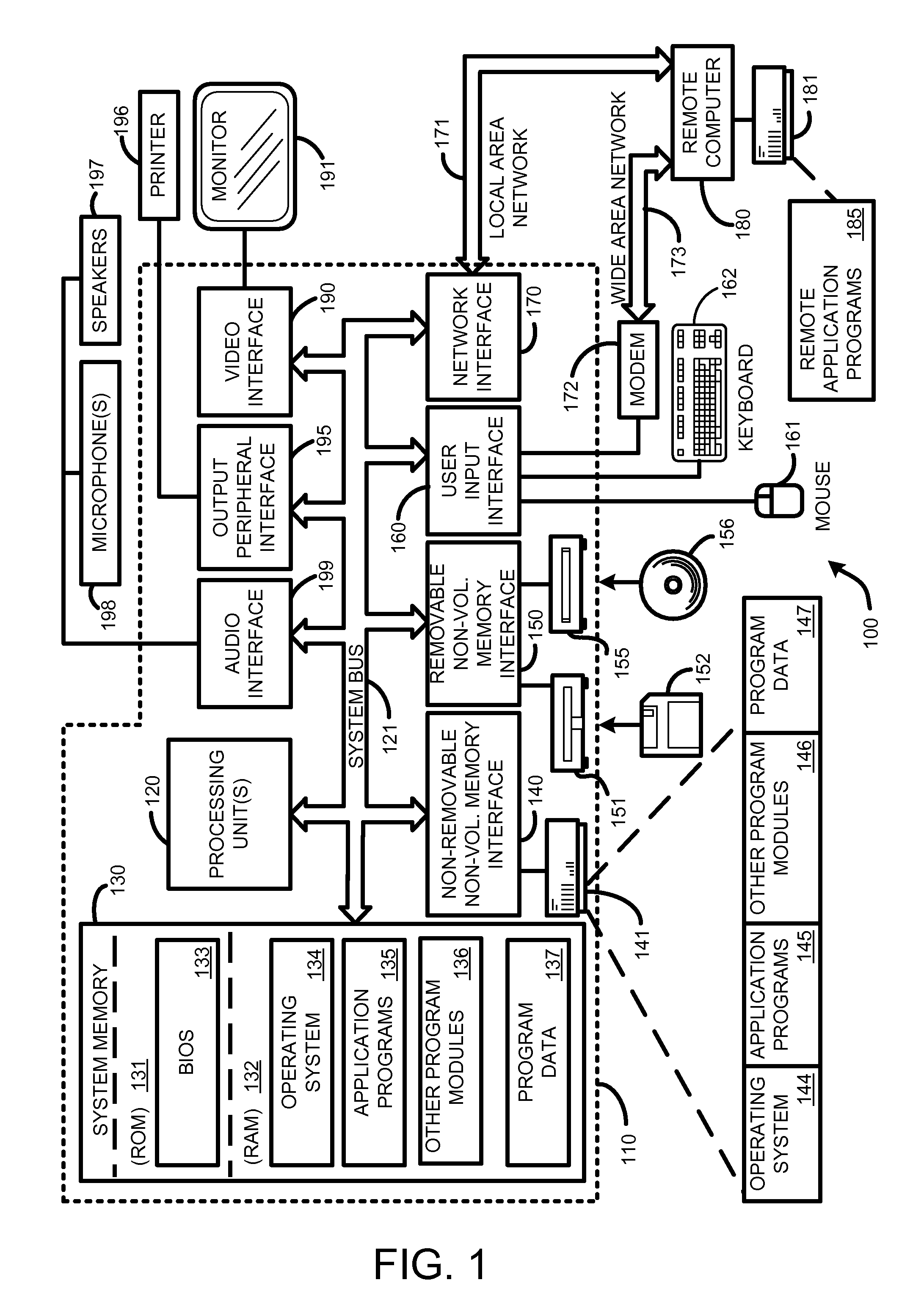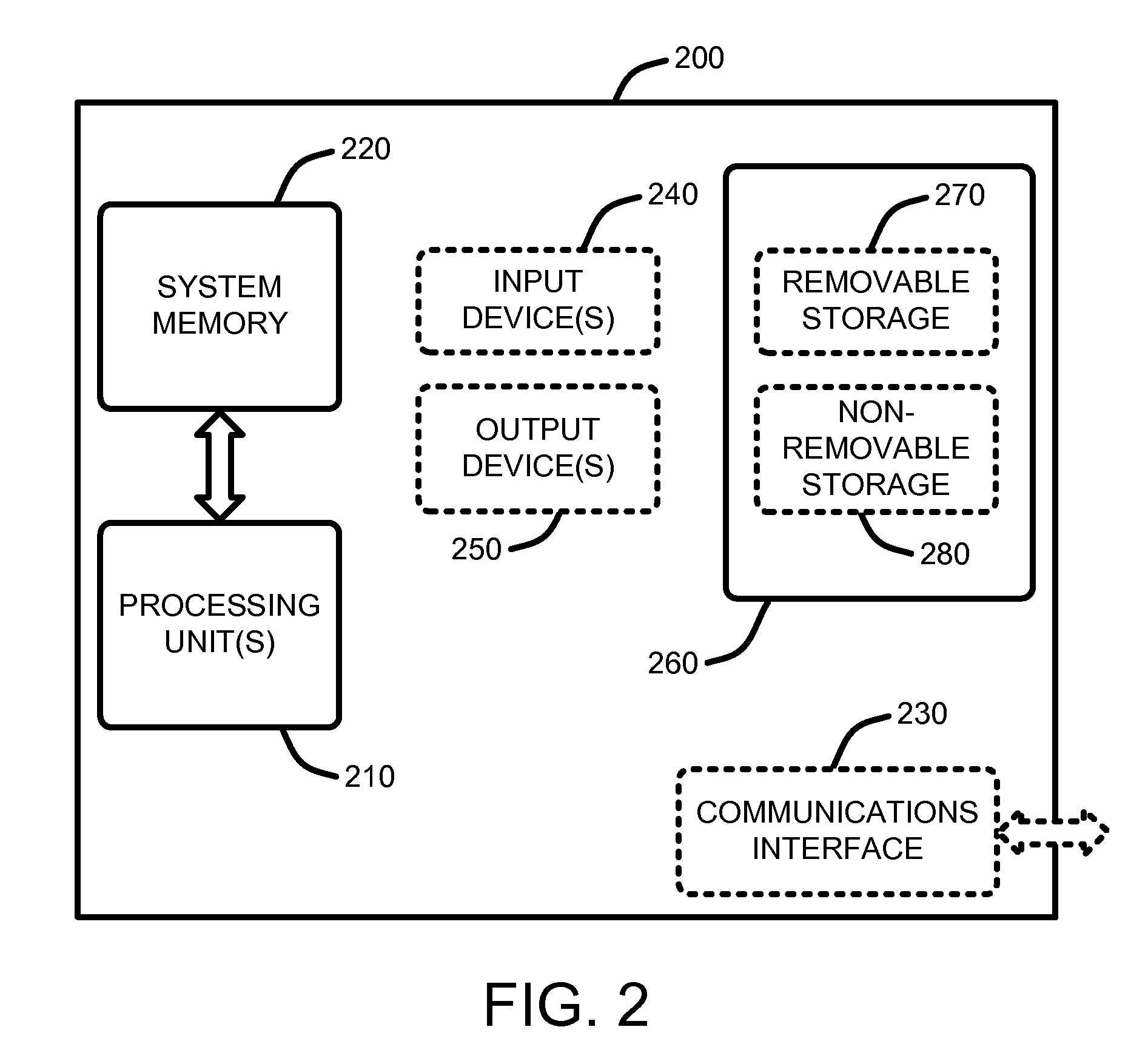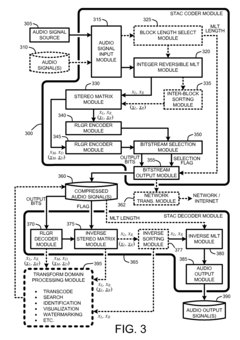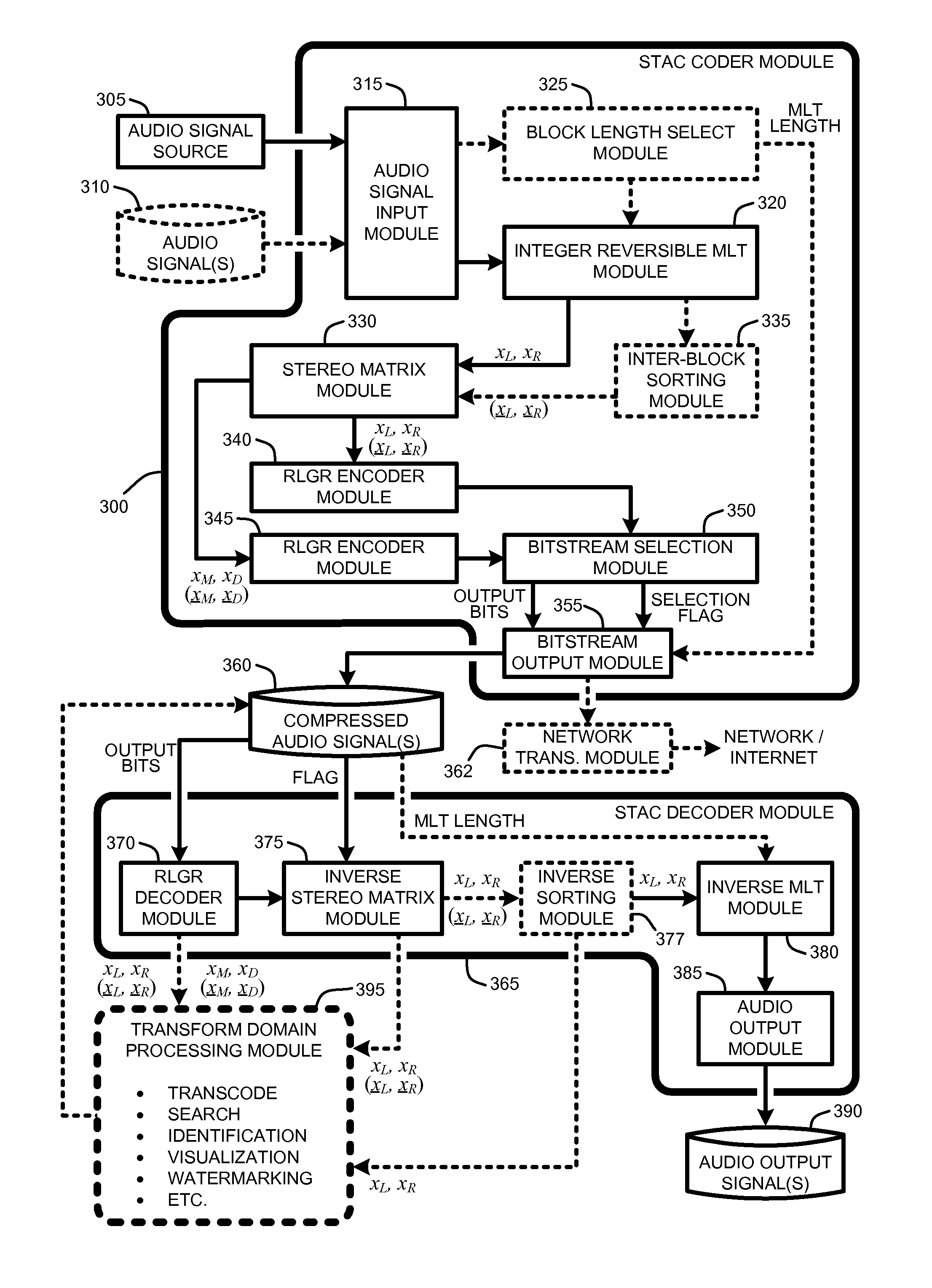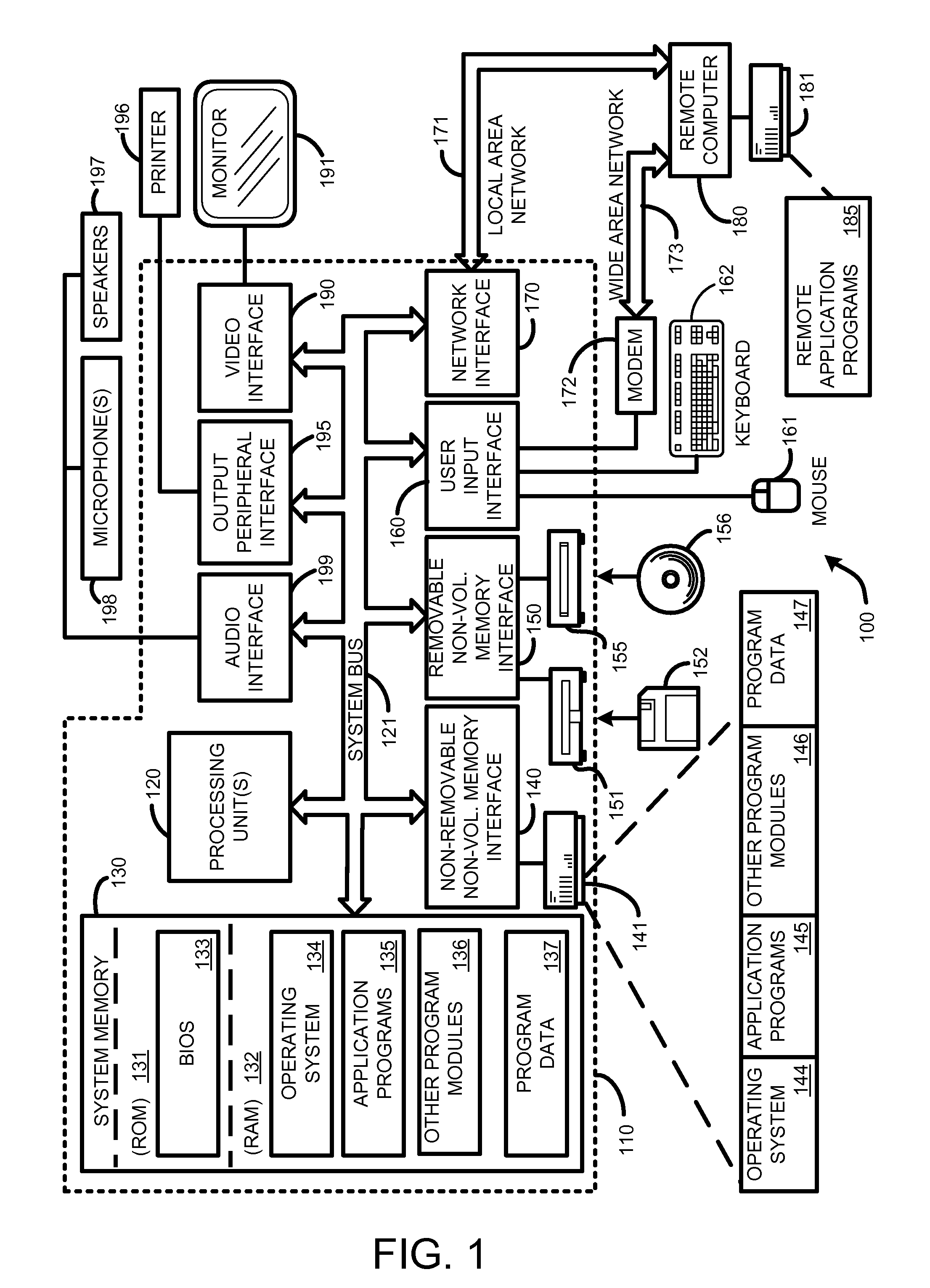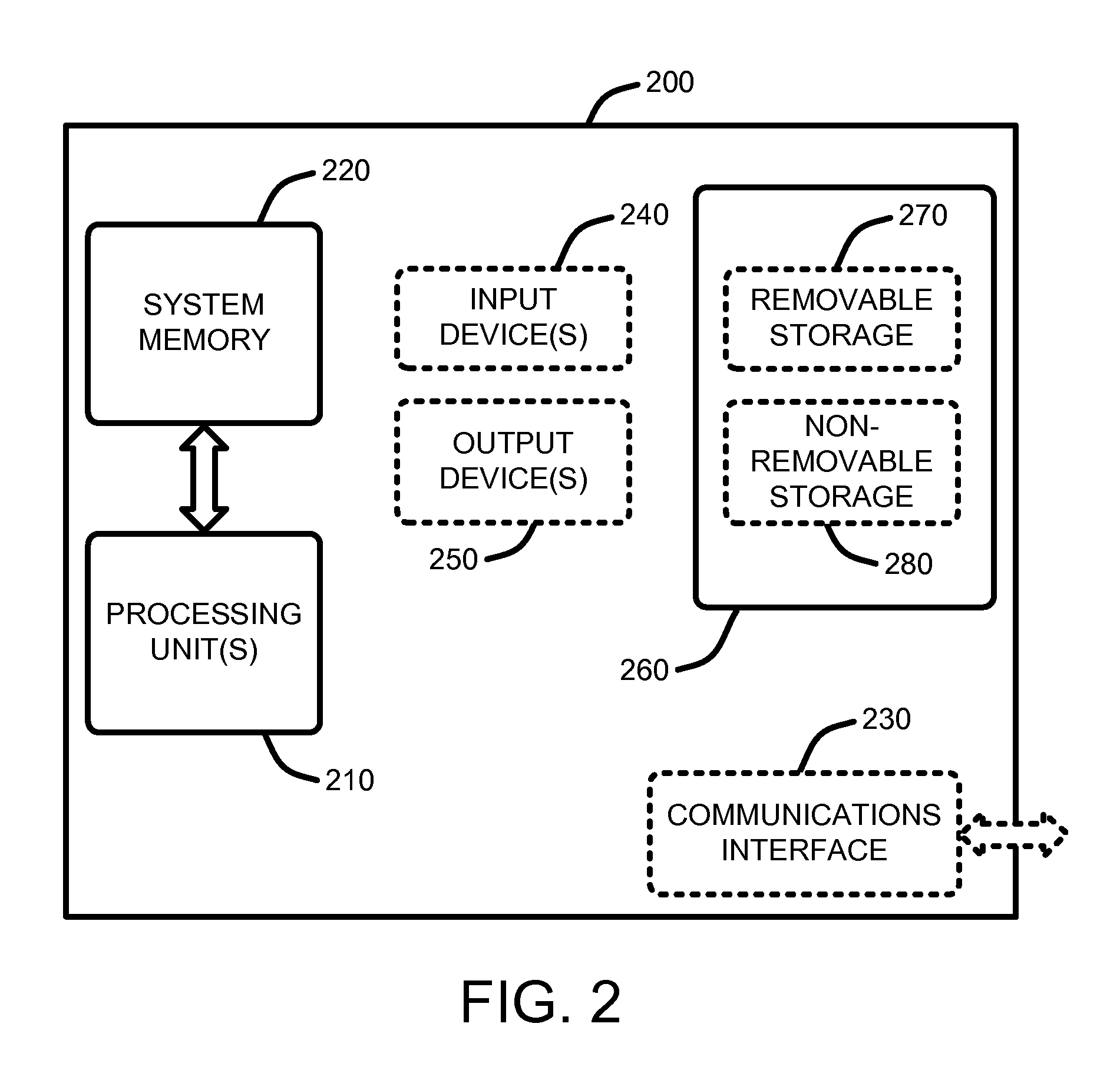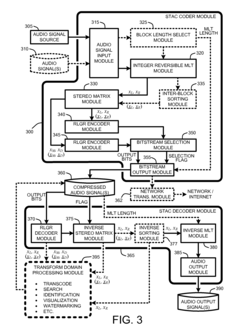LDAC Codec: Revolutionizing Lossless Audio Transmission
JUL 4, 20258 MIN READ
Generate Your Research Report Instantly with AI Agent
Patsnap Eureka helps you evaluate technical feasibility & market potential.
LDAC Codec Evolution and Objectives
LDAC (Low Delay Audio Codec) has emerged as a groundbreaking technology in the realm of audio transmission, revolutionizing the way we experience high-quality sound. Developed by Sony in 2015, LDAC has rapidly evolved to become a leading codec for lossless audio transmission, particularly in wireless audio devices.
The evolution of LDAC codec can be traced back to the increasing demand for high-fidelity audio in portable devices. As consumers sought better audio quality in their wireless headphones and speakers, traditional codecs like SBC (Subband Coding) and AAC (Advanced Audio Coding) fell short in delivering the desired audio experience. This gap in the market paved the way for LDAC's development and subsequent iterations.
LDAC's primary objective is to enable the transmission of high-resolution audio content over Bluetooth connections without compromising on quality. It aims to achieve this by utilizing a variable bitrate system that can adapt to different network conditions and device capabilities. The codec supports bitrates up to 990 kbps, significantly higher than its predecessors, allowing for near-lossless audio transmission.
Throughout its evolution, LDAC has undergone several improvements to enhance its performance and compatibility. One of the key milestones was its integration into the Android Open Source Project (AOSP) in 2017, making it widely available to Android device manufacturers. This move significantly expanded LDAC's reach and accelerated its adoption in the consumer electronics market.
The technical objectives of LDAC have consistently focused on three main areas: maximizing audio quality, minimizing latency, and optimizing power consumption. By employing advanced signal processing algorithms and efficient data compression techniques, LDAC strives to deliver audio that is virtually indistinguishable from the original source material.
As the technology continues to evolve, LDAC faces new challenges and opportunities. The increasing prevalence of true wireless stereo (TWS) earbuds has pushed the codec to adapt to even more stringent power and bandwidth constraints. Additionally, the growing interest in spatial audio and immersive sound experiences has prompted research into expanding LDAC's capabilities to support multi-channel audio transmission.
Looking ahead, the future objectives for LDAC include further reducing latency for real-time applications, improving energy efficiency to extend battery life in wireless devices, and exploring integration with emerging technologies such as 5G and Wi-Fi 6. These advancements aim to solidify LDAC's position as a leading audio codec in the era of high-resolution streaming and immersive audio experiences.
The evolution of LDAC codec can be traced back to the increasing demand for high-fidelity audio in portable devices. As consumers sought better audio quality in their wireless headphones and speakers, traditional codecs like SBC (Subband Coding) and AAC (Advanced Audio Coding) fell short in delivering the desired audio experience. This gap in the market paved the way for LDAC's development and subsequent iterations.
LDAC's primary objective is to enable the transmission of high-resolution audio content over Bluetooth connections without compromising on quality. It aims to achieve this by utilizing a variable bitrate system that can adapt to different network conditions and device capabilities. The codec supports bitrates up to 990 kbps, significantly higher than its predecessors, allowing for near-lossless audio transmission.
Throughout its evolution, LDAC has undergone several improvements to enhance its performance and compatibility. One of the key milestones was its integration into the Android Open Source Project (AOSP) in 2017, making it widely available to Android device manufacturers. This move significantly expanded LDAC's reach and accelerated its adoption in the consumer electronics market.
The technical objectives of LDAC have consistently focused on three main areas: maximizing audio quality, minimizing latency, and optimizing power consumption. By employing advanced signal processing algorithms and efficient data compression techniques, LDAC strives to deliver audio that is virtually indistinguishable from the original source material.
As the technology continues to evolve, LDAC faces new challenges and opportunities. The increasing prevalence of true wireless stereo (TWS) earbuds has pushed the codec to adapt to even more stringent power and bandwidth constraints. Additionally, the growing interest in spatial audio and immersive sound experiences has prompted research into expanding LDAC's capabilities to support multi-channel audio transmission.
Looking ahead, the future objectives for LDAC include further reducing latency for real-time applications, improving energy efficiency to extend battery life in wireless devices, and exploring integration with emerging technologies such as 5G and Wi-Fi 6. These advancements aim to solidify LDAC's position as a leading audio codec in the era of high-resolution streaming and immersive audio experiences.
Hi-Res Audio Market Analysis
The Hi-Res Audio market has experienced significant growth in recent years, driven by increasing consumer demand for high-quality audio experiences. This trend is particularly evident in the premium audio segment, where discerning listeners seek audio reproduction that closely matches the original studio recording. The market for Hi-Res Audio encompasses a wide range of products, including digital audio players, headphones, speakers, and streaming services.
One of the key factors fueling market growth is the proliferation of high-speed internet and advanced mobile devices, which have made it easier for consumers to access and enjoy Hi-Res Audio content. Additionally, the growing popularity of music streaming services has created a new distribution channel for Hi-Res Audio, with several major platforms now offering lossless and high-resolution audio options.
The automotive industry has also emerged as a significant driver of Hi-Res Audio adoption, with luxury car manufacturers integrating advanced audio systems into their vehicles to enhance the in-car listening experience. This trend is expected to continue as automakers seek to differentiate their products and cater to audiophile consumers.
In terms of regional markets, North America and Europe have traditionally been strongholds for Hi-Res Audio, with a well-established base of audiophile consumers. However, the Asia-Pacific region, particularly countries like Japan, South Korea, and China, has shown rapid growth in recent years, driven by a combination of technological innovation and increasing disposable incomes.
The market for Hi-Res Audio codecs, such as LDAC, plays a crucial role in the overall ecosystem. These codecs enable the efficient transmission of high-quality audio over wireless connections, addressing one of the key challenges in delivering lossless audio experiences. As wireless audio devices continue to gain popularity, the demand for advanced codecs like LDAC is expected to grow significantly.
Looking ahead, the Hi-Res Audio market is poised for continued expansion, with several trends shaping its future. These include the integration of artificial intelligence and machine learning technologies to enhance audio processing and personalization, the development of more energy-efficient Hi-Res Audio solutions for mobile devices, and the increasing adoption of immersive audio formats for gaming and virtual reality applications.
One of the key factors fueling market growth is the proliferation of high-speed internet and advanced mobile devices, which have made it easier for consumers to access and enjoy Hi-Res Audio content. Additionally, the growing popularity of music streaming services has created a new distribution channel for Hi-Res Audio, with several major platforms now offering lossless and high-resolution audio options.
The automotive industry has also emerged as a significant driver of Hi-Res Audio adoption, with luxury car manufacturers integrating advanced audio systems into their vehicles to enhance the in-car listening experience. This trend is expected to continue as automakers seek to differentiate their products and cater to audiophile consumers.
In terms of regional markets, North America and Europe have traditionally been strongholds for Hi-Res Audio, with a well-established base of audiophile consumers. However, the Asia-Pacific region, particularly countries like Japan, South Korea, and China, has shown rapid growth in recent years, driven by a combination of technological innovation and increasing disposable incomes.
The market for Hi-Res Audio codecs, such as LDAC, plays a crucial role in the overall ecosystem. These codecs enable the efficient transmission of high-quality audio over wireless connections, addressing one of the key challenges in delivering lossless audio experiences. As wireless audio devices continue to gain popularity, the demand for advanced codecs like LDAC is expected to grow significantly.
Looking ahead, the Hi-Res Audio market is poised for continued expansion, with several trends shaping its future. These include the integration of artificial intelligence and machine learning technologies to enhance audio processing and personalization, the development of more energy-efficient Hi-Res Audio solutions for mobile devices, and the increasing adoption of immersive audio formats for gaming and virtual reality applications.
LDAC Technology Status and Challenges
LDAC (Low Latency Audio Codec) technology, developed by Sony, has made significant strides in the field of high-quality audio transmission. Currently, LDAC is widely recognized as one of the most advanced Bluetooth audio codecs available, capable of transmitting audio at up to 990 kbps, which is substantially higher than traditional codecs like SBC or AAC.
The current status of LDAC technology showcases its ability to support 24-bit/96 kHz audio transmission over Bluetooth, a feat that was previously considered challenging due to bandwidth limitations. This breakthrough has positioned LDAC as a preferred choice for audiophiles and music enthusiasts who demand high-fidelity audio in wireless devices.
Despite its advancements, LDAC faces several challenges in the current technological landscape. One primary challenge is compatibility. While LDAC has been adopted by many Android devices since version 8.0, its integration into other platforms, particularly iOS devices, remains limited. This fragmentation in the market poses a significant hurdle for widespread adoption.
Another challenge lies in the power consumption of LDAC-enabled devices. The high data transmission rate required for lossless audio can lead to increased battery drain, especially in smaller devices like true wireless earbuds. Balancing audio quality with energy efficiency continues to be an ongoing area of development for LDAC technology.
Interoperability with other audio codecs and standards also presents a challenge. As the audio industry evolves, ensuring seamless integration and backward compatibility with existing systems while maintaining LDAC's high-quality standards is crucial for its long-term success.
The geographical distribution of LDAC technology is primarily concentrated in Asia, particularly Japan, where Sony is headquartered. However, its influence is gradually expanding globally, with increasing adoption in North America and Europe. This expansion brings forth challenges related to regional regulations and varying consumer preferences across different markets.
From a technical standpoint, LDAC still grapples with latency issues, especially in scenarios requiring real-time audio processing. While it offers lower latency compared to some other high-quality codecs, achieving true lossless audio transmission with minimal delay remains an area for improvement.
Lastly, the challenge of educating consumers about the benefits of high-resolution audio codecs like LDAC persists. Many users are unaware of the differences in audio quality between various codecs, which can hinder the adoption of premium audio technologies in the mass market.
The current status of LDAC technology showcases its ability to support 24-bit/96 kHz audio transmission over Bluetooth, a feat that was previously considered challenging due to bandwidth limitations. This breakthrough has positioned LDAC as a preferred choice for audiophiles and music enthusiasts who demand high-fidelity audio in wireless devices.
Despite its advancements, LDAC faces several challenges in the current technological landscape. One primary challenge is compatibility. While LDAC has been adopted by many Android devices since version 8.0, its integration into other platforms, particularly iOS devices, remains limited. This fragmentation in the market poses a significant hurdle for widespread adoption.
Another challenge lies in the power consumption of LDAC-enabled devices. The high data transmission rate required for lossless audio can lead to increased battery drain, especially in smaller devices like true wireless earbuds. Balancing audio quality with energy efficiency continues to be an ongoing area of development for LDAC technology.
Interoperability with other audio codecs and standards also presents a challenge. As the audio industry evolves, ensuring seamless integration and backward compatibility with existing systems while maintaining LDAC's high-quality standards is crucial for its long-term success.
The geographical distribution of LDAC technology is primarily concentrated in Asia, particularly Japan, where Sony is headquartered. However, its influence is gradually expanding globally, with increasing adoption in North America and Europe. This expansion brings forth challenges related to regional regulations and varying consumer preferences across different markets.
From a technical standpoint, LDAC still grapples with latency issues, especially in scenarios requiring real-time audio processing. While it offers lower latency compared to some other high-quality codecs, achieving true lossless audio transmission with minimal delay remains an area for improvement.
Lastly, the challenge of educating consumers about the benefits of high-resolution audio codecs like LDAC persists. Many users are unaware of the differences in audio quality between various codecs, which can hinder the adoption of premium audio technologies in the mass market.
Current LDAC Implementation Strategies
01 LDAC codec implementation for high-quality audio transmission
LDAC is a high-resolution audio codec designed for Bluetooth audio transmission. It enables the transmission of high-quality audio data over Bluetooth connections, providing better sound quality compared to standard codecs. The codec uses adaptive bit rate allocation and efficient encoding techniques to maximize audio quality within the available bandwidth.- LDAC codec implementation for high-quality audio transmission: LDAC is a high-resolution audio codec developed for Bluetooth audio transmission. It enables the transmission of high-quality audio data over Bluetooth connections by utilizing efficient encoding and decoding techniques. This codec supports various bit rates and sampling frequencies, allowing for flexible adaptation to different audio quality requirements and network conditions.
- Audio compression and decompression techniques for LDAC: The LDAC codec employs advanced audio compression and decompression algorithms to maintain high audio quality while reducing data size for efficient transmission. These techniques involve adaptive bit allocation, psychoacoustic modeling, and spectral analysis to optimize the encoding process. The decoder reconstructs the audio signal with minimal loss, ensuring a near-lossless listening experience.
- Integration of LDAC with Bluetooth audio streaming protocols: LDAC is designed to work seamlessly with Bluetooth audio streaming protocols, such as A2DP (Advanced Audio Distribution Profile). This integration allows for compatibility with a wide range of Bluetooth-enabled devices while maintaining the codec's high-quality audio transmission capabilities. The implementation includes optimizations for power consumption and latency reduction in wireless audio streaming scenarios.
- Adaptive bit rate control for LDAC transmission: LDAC incorporates adaptive bit rate control mechanisms to optimize audio quality based on available bandwidth and connection stability. This feature allows the codec to dynamically adjust its bit rate and encoding parameters in real-time, ensuring the best possible audio quality while maintaining a stable connection. The adaptive nature of LDAC helps in handling varying network conditions and device capabilities.
- Error concealment and packet loss handling in LDAC: To maintain audio quality in challenging transmission environments, LDAC implements error concealment and packet loss handling techniques. These methods involve intelligent interpolation, prediction, and reconstruction of lost or corrupted audio data. By minimizing the impact of transmission errors, LDAC ensures a smooth and uninterrupted listening experience even in less-than-ideal network conditions.
02 Audio compression and decompression techniques for LDAC
LDAC employs advanced audio compression and decompression algorithms to efficiently transmit high-quality audio over Bluetooth. These techniques involve optimizing bit allocation, frequency analysis, and psychoacoustic modeling to preserve audio fidelity while reducing data size. The codec adapts to different transmission conditions to maintain optimal performance.Expand Specific Solutions03 Integration of LDAC with audio playback devices
LDAC codec can be integrated into various audio playback devices, including smartphones, portable music players, and wireless speakers. The integration involves implementing the codec in hardware or software, ensuring compatibility with Bluetooth audio profiles, and optimizing power consumption for mobile devices.Expand Specific Solutions04 LDAC support in Bluetooth audio transmission protocols
LDAC codec can be incorporated into Bluetooth audio transmission protocols to enable high-quality wireless audio streaming. This involves modifications to existing Bluetooth profiles, such as A2DP (Advanced Audio Distribution Profile), to support the higher bitrates and encoding methods used by LDAC.Expand Specific Solutions05 Audio quality optimization and error correction in LDAC
LDAC incorporates various techniques to optimize audio quality and handle transmission errors. These include adaptive bit rate control, error concealment algorithms, and dynamic range control. The codec also employs methods to minimize latency and maintain synchronization between audio and video in multimedia applications.Expand Specific Solutions
Key Players in Wireless Audio Industry
The LDAC codec technology for lossless audio transmission is in a growth phase, with increasing market adoption and ongoing research. The global lossless audio codec market is expanding, driven by demand for high-quality audio streaming and storage solutions. Major players like Sony, Samsung Electronics, and LG Electronics are actively developing and implementing LDAC technology in their products. While the technology is maturing, there's still room for innovation and improvement, particularly in areas of efficiency and compatibility. Companies such as Fraunhofer-Gesellschaft and Dolby International AB are also contributing to the advancement of audio codec technologies, potentially influencing the competitive landscape of LDAC and similar solutions.
Samsung Electronics Co., Ltd.
Technical Solution: Samsung has integrated LDAC codec support into its Galaxy series smartphones and wireless audio devices. Their implementation focuses on optimizing power consumption while maintaining high-quality audio transmission. Samsung's approach includes a custom DSP (Digital Signal Processor) designed specifically for efficient LDAC encoding and decoding[3]. The company has also developed an AI-enhanced audio upscaling technology that works in conjunction with LDAC to improve the quality of lower-resolution audio files during transmission[4].
Strengths: Wide device ecosystem support, power-efficient implementation, AI-enhanced audio upscaling. Weaknesses: Limited to Samsung's ecosystem, potential compatibility issues with non-Samsung devices.
LG Electronics, Inc.
Technical Solution: LG has incorporated LDAC support in its high-end audio products, including soundbars and wireless speakers. Their implementation focuses on multi-room audio systems, allowing seamless LDAC streaming across multiple devices. LG's approach includes a proprietary room calibration technology that works in tandem with LDAC to optimize audio output based on room acoustics[5]. The company has also developed a low-latency mode for LDAC transmission, particularly beneficial for gaming and video applications[6].
Strengths: Multi-room audio optimization, low-latency mode for gaming and video. Weaknesses: Limited to high-end products, potentially complex setup for multi-room systems.
LDAC Core Patents and Innovations
Audio compression and decompression using integer-reversible modulated lapped transforms
PatentActiveUS7991622B2
Innovation
- The STAC Codec employs an integer modulated lapped transform (MLT) for transforming audio signals into the frequency domain, combined with a backward-adaptive run-length Golomb-Rice (RLGR) encoder for compressing transform coefficients, allowing for efficient lossless and near-lossless compression with reduced computational overhead and enabling fast transcoding between formats.
Transform domain transcoding and decoding of audio data using integer-reversible modulated lapped transforms
PatentActiveUS8086465B2
Innovation
- The STAC Codec employs an integer modulated lapped transform (MLT) for transforming audio signals into the frequency domain, combined with a backward-adaptive run-length Golomb-Rice (RLGR) encoder for compressing transform coefficients, allowing for efficient lossless and near-lossless compression with reduced computational overhead and enabling fast transcoding between formats.
Interoperability with Other Codecs
Interoperability is a crucial aspect of any audio codec, and LDAC is no exception. As a revolutionary lossless audio transmission technology, LDAC's ability to work seamlessly with other codecs is essential for its widespread adoption and integration into existing audio ecosystems.
LDAC demonstrates impressive compatibility with various audio formats and codecs. It can handle a wide range of audio file types, including WAV, FLAC, ALAC, and MP3. This versatility allows users to enjoy high-quality audio across different file formats without the need for conversion, enhancing the overall user experience.
One of LDAC's key strengths is its ability to coexist with other Bluetooth audio codecs. It can seamlessly switch between different codecs depending on the capabilities of the connected devices. For instance, when a device that supports LDAC connects to a non-LDAC enabled device, it can automatically fall back to other widely supported codecs like SBC or AAC, ensuring continuous audio playback.
In terms of integration with existing audio processing chains, LDAC has shown remarkable adaptability. It can be incorporated into various digital signal processing (DSP) workflows without significant modifications to the overall system architecture. This flexibility makes it an attractive option for manufacturers looking to upgrade their audio capabilities without overhauling their entire product line.
LDAC's interoperability extends to its compatibility with different operating systems and platforms. It is natively supported in Android devices running Android 8.0 (Oreo) and above, and can be easily integrated into iOS and Windows systems through third-party applications or hardware solutions. This cross-platform compatibility ensures that LDAC can reach a wide user base across different devices and ecosystems.
Furthermore, LDAC has demonstrated its ability to work alongside other audio enhancement technologies. It can be used in conjunction with various spatial audio technologies, such as Dolby Atmos or Sony's 360 Reality Audio, without compromising the quality of the audio transmission. This synergy allows for immersive audio experiences while maintaining the high-fidelity audio that LDAC is known for.
In the realm of professional audio, LDAC has shown promising interoperability with professional-grade audio equipment. It can be integrated into high-end audio interfaces, digital mixers, and studio monitors, providing a wireless solution that meets the demanding standards of audio professionals. This versatility opens up new possibilities for wireless audio in professional settings, where lossless audio quality is paramount.
LDAC demonstrates impressive compatibility with various audio formats and codecs. It can handle a wide range of audio file types, including WAV, FLAC, ALAC, and MP3. This versatility allows users to enjoy high-quality audio across different file formats without the need for conversion, enhancing the overall user experience.
One of LDAC's key strengths is its ability to coexist with other Bluetooth audio codecs. It can seamlessly switch between different codecs depending on the capabilities of the connected devices. For instance, when a device that supports LDAC connects to a non-LDAC enabled device, it can automatically fall back to other widely supported codecs like SBC or AAC, ensuring continuous audio playback.
In terms of integration with existing audio processing chains, LDAC has shown remarkable adaptability. It can be incorporated into various digital signal processing (DSP) workflows without significant modifications to the overall system architecture. This flexibility makes it an attractive option for manufacturers looking to upgrade their audio capabilities without overhauling their entire product line.
LDAC's interoperability extends to its compatibility with different operating systems and platforms. It is natively supported in Android devices running Android 8.0 (Oreo) and above, and can be easily integrated into iOS and Windows systems through third-party applications or hardware solutions. This cross-platform compatibility ensures that LDAC can reach a wide user base across different devices and ecosystems.
Furthermore, LDAC has demonstrated its ability to work alongside other audio enhancement technologies. It can be used in conjunction with various spatial audio technologies, such as Dolby Atmos or Sony's 360 Reality Audio, without compromising the quality of the audio transmission. This synergy allows for immersive audio experiences while maintaining the high-fidelity audio that LDAC is known for.
In the realm of professional audio, LDAC has shown promising interoperability with professional-grade audio equipment. It can be integrated into high-end audio interfaces, digital mixers, and studio monitors, providing a wireless solution that meets the demanding standards of audio professionals. This versatility opens up new possibilities for wireless audio in professional settings, where lossless audio quality is paramount.
Power Consumption Optimization for LDAC
Power consumption optimization is a critical aspect of LDAC codec development, as it directly impacts the battery life and overall efficiency of devices implementing this technology. The LDAC codec, known for its high-quality audio transmission capabilities, requires significant computational resources, which can lead to increased power consumption. To address this challenge, researchers and engineers have been focusing on various optimization strategies.
One of the primary approaches to power consumption optimization in LDAC is the implementation of adaptive bit rate control. This technique allows the codec to dynamically adjust its bit rate based on the available bandwidth and device capabilities. By reducing the bit rate when necessary, the codec can lower its computational demands, thereby decreasing power consumption without significantly compromising audio quality.
Another key area of focus is the optimization of the encoding and decoding algorithms. Researchers are exploring ways to streamline these processes, reducing the number of calculations required while maintaining the codec's high-quality output. This includes the development of more efficient quantization methods and the use of advanced signal processing techniques to minimize computational complexity.
Hardware acceleration has also played a crucial role in power consumption optimization for LDAC. By offloading certain codec operations to dedicated hardware components, such as digital signal processors (DSPs) or application-specific integrated circuits (ASICs), the overall power consumption can be significantly reduced. These specialized hardware solutions are designed to perform codec-specific tasks more efficiently than general-purpose processors.
Power-aware scheduling techniques have been implemented to further optimize LDAC's energy efficiency. These techniques involve intelligently managing the codec's processing tasks, prioritizing critical operations, and minimizing unnecessary computations during periods of low activity or when battery levels are low.
Researchers are also exploring the potential of machine learning algorithms to optimize LDAC's power consumption. By analyzing usage patterns and audio characteristics, these algorithms can predict optimal codec settings and adjust parameters in real-time to achieve the best balance between audio quality and power efficiency.
The development of low-power LDAC implementations for specific platforms, such as wearable devices and IoT applications, has gained significant attention. These implementations focus on tailoring the codec to the unique constraints of these platforms, often sacrificing some flexibility for improved power efficiency.
As the demand for high-quality wireless audio transmission continues to grow, the ongoing efforts in power consumption optimization for LDAC are crucial for ensuring the codec's widespread adoption and long-term viability in battery-powered devices.
One of the primary approaches to power consumption optimization in LDAC is the implementation of adaptive bit rate control. This technique allows the codec to dynamically adjust its bit rate based on the available bandwidth and device capabilities. By reducing the bit rate when necessary, the codec can lower its computational demands, thereby decreasing power consumption without significantly compromising audio quality.
Another key area of focus is the optimization of the encoding and decoding algorithms. Researchers are exploring ways to streamline these processes, reducing the number of calculations required while maintaining the codec's high-quality output. This includes the development of more efficient quantization methods and the use of advanced signal processing techniques to minimize computational complexity.
Hardware acceleration has also played a crucial role in power consumption optimization for LDAC. By offloading certain codec operations to dedicated hardware components, such as digital signal processors (DSPs) or application-specific integrated circuits (ASICs), the overall power consumption can be significantly reduced. These specialized hardware solutions are designed to perform codec-specific tasks more efficiently than general-purpose processors.
Power-aware scheduling techniques have been implemented to further optimize LDAC's energy efficiency. These techniques involve intelligently managing the codec's processing tasks, prioritizing critical operations, and minimizing unnecessary computations during periods of low activity or when battery levels are low.
Researchers are also exploring the potential of machine learning algorithms to optimize LDAC's power consumption. By analyzing usage patterns and audio characteristics, these algorithms can predict optimal codec settings and adjust parameters in real-time to achieve the best balance between audio quality and power efficiency.
The development of low-power LDAC implementations for specific platforms, such as wearable devices and IoT applications, has gained significant attention. These implementations focus on tailoring the codec to the unique constraints of these platforms, often sacrificing some flexibility for improved power efficiency.
As the demand for high-quality wireless audio transmission continues to grow, the ongoing efforts in power consumption optimization for LDAC are crucial for ensuring the codec's widespread adoption and long-term viability in battery-powered devices.
Unlock deeper insights with Patsnap Eureka Quick Research — get a full tech report to explore trends and direct your research. Try now!
Generate Your Research Report Instantly with AI Agent
Supercharge your innovation with Patsnap Eureka AI Agent Platform!
